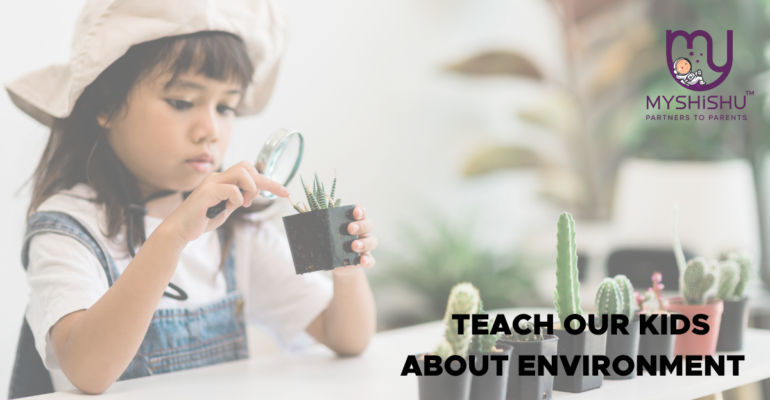Sprouting Stewards: Fun & Engaging Ways to Teach Kids About the Environment
Sprouting Stewards: Fun & Engaging Ways to Teach Kids About the Environment
Introduction
Earth – our great life-giving playground! It is our responsibility to ensure that this wonderful planet continues to thrive for generations to come. But where do we start? Answer: With our children! Instilling love and respect for the environment early on creates a sense of stewardship that will benefit the planet for years to come.
Still, environmental education for kids doesn’t feel like work. It should be engaging, informative, and most importantly fun! This blog explores a variety of ways to spark a passion for the environment in your little eco-warriors.
This blog is your guide to inspiring a love of the environment in your children. We will explore exciting activities, answer frequently asked questions, and prepare resources to train a few biological warriors who understand the importance of protecting our planet.
Table of Contents
Nature’s playground: Enhancing communication in the park
The best way to appreciate something is to experience it. Get the kids outside and immerse them in the wonders of nature. Here are some ideas:
• Become backyard explorers
Turn your backyard into a miniature ecosystem. Plant a butterfly garden, make bird feeders, or just observe the variety of insects and plants that call it home.
• Hit the trails
Hike or bike along local nature trails. Explore parks, forests, even beaches. Show the variety of trees, interesting creatures that live in this area, and the delicate ecological balance.
• Camping Adventures
Plan a family camping trip! Sleeping under the stars at night allows children to appreciate the beauty and expanse of nature. Remember to leave nothing behind and practice responsible camping habits.
• Citizen Science Projects
Many organizations provide citizen science projects for children. These projects can provide valuable information for scientific research by studying their unique environmental profiles.
Learning through play: Activities that stimulate curiosity
Teaching doesn’t feel like lecturing. Here are some play activities to stimulate your child’s environmental awareness:
• Nature Scavenger Hunt
Make a list of nature scavengers for your kids to find on their outdoor adventures. This could be leaves, feathers, rocks, or even a particular flower or insect.
• Eco-Arts and Crafts
Collect natural materials such as leaves, branches, or pinecones and turn them into masterpieces. You can also make eco-friendly crafts out of recycled materials like cardboard rolls and plastic bags.
• Plant seeds and watch them grow
Plant a vegetable garden or pot with herbs with your children. This teaches them about living arrangements, the importance of healthy eating habits, and responsible consumption practices such as conserving water.
• Upcycling Extravaganza
Challenge your kids to upcycle old items instead of throwing them away! Plastic bags can be turned into planters, cardboard boxes into playgrounds and old clothes into decorative blankets.
• Story time environmental distortions
Read children’s books with environmental themes. Discuss the stories and how the characters interact with their surroundings. You can also encourage your kids to write their own eco-story!

Action and advocacy: The changing power of youth
Knowledge is power, but action also speaks loudly. Here’s how to empower your kids to be environmental advocates:
- Reduce, reuse, recycle: Turn waste reduction into a family game. Create a sorting system for recyclable and compostable materials. Encourage your child to recycle whenever possible and avoid single-use plastics.
- Energy Conservation Detectives: Invite your kids to be home energy detectives. Turn off lights when not in use, unplug electronics when not charging, and encourage short showers.
- Community Days: Organize or participate in local community cleanup days. This introduces your child to the impact of litter on the environment and shows them the importance of taking responsibility for their environment.
- Support eco-friendly businesses: Talk to your kids about the importance of supporting businesses that prioritize sustainability. Choose locally sourced products, low-package products, and companies that give back for environmental reasons.
- Speak up for change: Encourage your child’s voice! Attend local environmental meetings, write letters to representatives, or participate in online petitions for environmental protection.
Remember:
- Lead by example: Children are keen observers. Your personal environment will greatly influence their behavior.
- Age-appropriate: Adapt your activities to your child’s age and understanding. Keep it simple and fun for young children and gradually introduce complex ideas as they grow.
- Celebrate small victories: Acknowledge and celebrate your child’s efforts, no matter how small. Proper reinforcement will motivate them to continue their eco-friendly journey.
- Make It Fun!: Let’s face it, learning doesn’t feel like work.
Resources for training environmentally responsible children
Here are some online resources to aid your journey:
- National Geographic Kids website [National Geographic Kids website] offers fun games, information and activities that focus on the environment for children of all ages.
- Environmental Protection Agency (EPA) Kids Farm [U.S. Environmental Protection Agency (.gov)] provides educational materials and interactive tools for learning about the environment.
- National Wildlife Federation Ranger Rick Jr. magazine [National Wildlife Federation Ranger Rick Jr. magazine ON Ranger Rick rangerrick.org] is a treasure trove of interesting articles, activities and information about wildlife and conservation.
Additional Common Questions
Q: My baby is very young. How can I introduce them to environmental considerations?
A: Even young children can grasp basic concepts. Start with simple activities like nature walks, planting seeds, or sorting recyclables. Use positive words of encouragement and age-appropriate language to connect these actions with caring for the planet.
Q: What if my child doesn’t like nature?
A: Not all kids withdraw. Find ways to connect environmentalism to their interests. Do they love animals? Look for books or articles about endangered species. Are they interested in art? Use recycled materials for creative projects.
Q: How can I get my child involved in environmental issues?
A: Have fun! Incorporate environmental issues into daily routines. Pack trash-free lunches for school or hold a “green” game night with eco-themed board games or challenges.
Conclusion
Raising children who are environmentally apathetic is not about blaming them for their problems. It’s about fostering a love for the planet and equipping them with the knowledge and tools to be responsible stewards. By incorporating these practices and fostering open dialogue, you will raise a generation that is passionate about protecting our planet.
Remember, every little step counts. As you embark on this journey with your child, celebrate their curiosity, answer their questions with patience, and empower them to make changes. Together we will build a brighter future for our planet, one little eco-warrior at a time.











